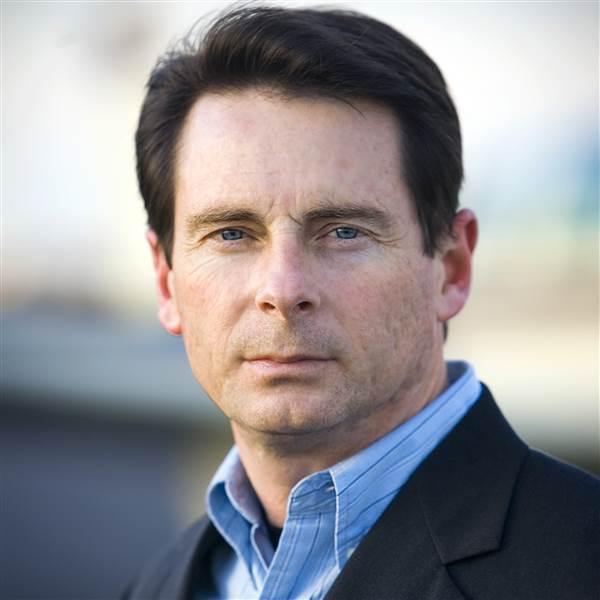Editor in Chief Thomas B. Haines has flown more than 100 types of aircraft.
Does nature abhor the brash? Thinking of the automotive world, names such as Tucker and DeLorean suggest that brash new ideas within an established industry just don’t, well, fly. Similarly, within aviation we’ve seen brashness met with resistance at best and often with failure.
There are probably earlier examples, but the Ercoupe comes to mind as a brash new design that should have changed the face of aviation, but instead turned out to be just a mole on its cheek. The Beech Starship, a Burt Rutan-designed all-composite twin pusher turboprop with a canard instead of an elevator, promised to spawn an entire generation of new models. Instead, Beech built 50 and, almost in embarrassment, bought most of them back and destroyed them. I flew one briefly and enjoyed it, but the airplane didn’t meet performance expectations. Mostly, the radical design just didn’t sit well with conservative aircraft buyers, so even if the performance could be fixed, the design was doomed. I’m told that Rutan still owns one that he uses in his Scaled Composites business.
While credit goes to Rutan for his vision and willingness to challenge conventional thinking and at times the laws of physics (i.e., the Voyager and the strangely asymmetrical Boomerang), none of his airplane designs meant for certification has been a commercial success, including the Adam A500 and A700. These brash designs underwritten by Rick Adam starting in the late 1990s struggled through years of design, test flying, and stages of certification. The all-composite A500 centerline thrust twin was a good idea when it started, but took so long to mature that it was eclipsed by the success of the single-engine turboprop market and then the very light jet market. Again, I flew one once and found it to be an easy airplane to fly. Chop an engine, and it soldiered on without putting up much of a fuss—a significant safety advantage over conventional twins.
Adam tried to recapture the lead by modifying the design to make it a twin jet—the A700, but hampered by the A500’s large tail structure and continuing funding problems, the project stalled. Adam went bankrupt early this year and was quickly snapped up by a group of Russian investors. They tried to reformulate the company, but after a sputter at the National Business Aviation Association convention this fall, company officials admitted defeat and shuttered the business once more in late October. With enough time and money, the design might have made it, but the global financial markets this year have had no time for those seeking investment.
It’s hard to use the words “aviation” and “brash” in the same sentence without mentioning Vern Raburn and Eclipse Aviation. Raburn, an early Microsoft executive and player in the computer industry, turned his attention to his passion in the late 1990s—aviation. The result was the Eclipse 500 and the promise of thousands of very light twin jets flowing annually from the Albuquerque, New Mexico, factory by now. Although the 500 is rather conservatively designed from an aerodynamic and powerplant standpoint, Raburn brashly thumbed his nose at those who manufactured airplanes in the conventional way, at typical aircraft systems, and at the usual circuitous routes to certifying an airplane and building an aviation company. Bold marketing, aggressive pricing, and a take-no-prisoners approach to certification rocketed Raburn and company to the front cover of every aviation and business publication.
Raburn’s vision of a central operating system for managing all of the aircraft systems proved to be far more challenging than anyone envisioned. The Williams International powerplant specified for the airplane didn’t meet its numbers, causing more than a year’s delay while they swapped in Pratt & Whitney engines. Avionics and display problems further slowed progress. Raising additional cash was an ongoing challenge—all this despite thousands of orders in backlog. The problem was that delivering the airplanes at the attractive prices that garnered all of those orders required the company to quickly ramp manufacturing to very high levels—at least by aviation standards. As we’ve seen with every other new aircraft manufacturer (Cirrus and Columbia, for example), the ramp up to profitable production proved at least as challenging as designing and certifying an airplane.
Because of the ongoing struggles, Raburn was ousted from Eclipse last summer. The company was desperately trying to raise cash this fall at the time when the global financial markets imploded. An infusion from Russian investors—the great hope for Eclipse—appeared unlikely in late October. At the same time, Forecast International, a market research firm, predicted that no cash would be forthcoming and that Eclipse will be forced to shut down in early 2009.
Again, I’ve flown the Eclipse 500 on several occasions (hmmm, am I the common thread here?) and found it to hold much promise. The more than 250 models delivered do not carry the avionics systems you expect in a jet, but if Eclipse survives long enough to upgrade them as promised, customers will find the airplanes to be wonderful personal time machines. Unlike some other models mentioned earlier, this one actually meets its performance goals and, even at its current, higher price of $2.15 million, represents a good value relative to other airplanes in the market.
The question is whether the company can retool itself from what was planned to be a high-volume manufacturing operation to one that can succeed at a more “normal” production rate for aviation. If it can be repositioned to be profitable on a couple of hundred units a year, look for the Eclipse family (including the Eclipse 400 single-engine jet) to have a long and happy production run. But, unfortunately, it may be too late.
So, while the movies often portray pilots with a lot of swagger, when it comes to the airplanes we fly and the companies we support, there appears to be little room for brash.
E-mail the author at [email protected] .



